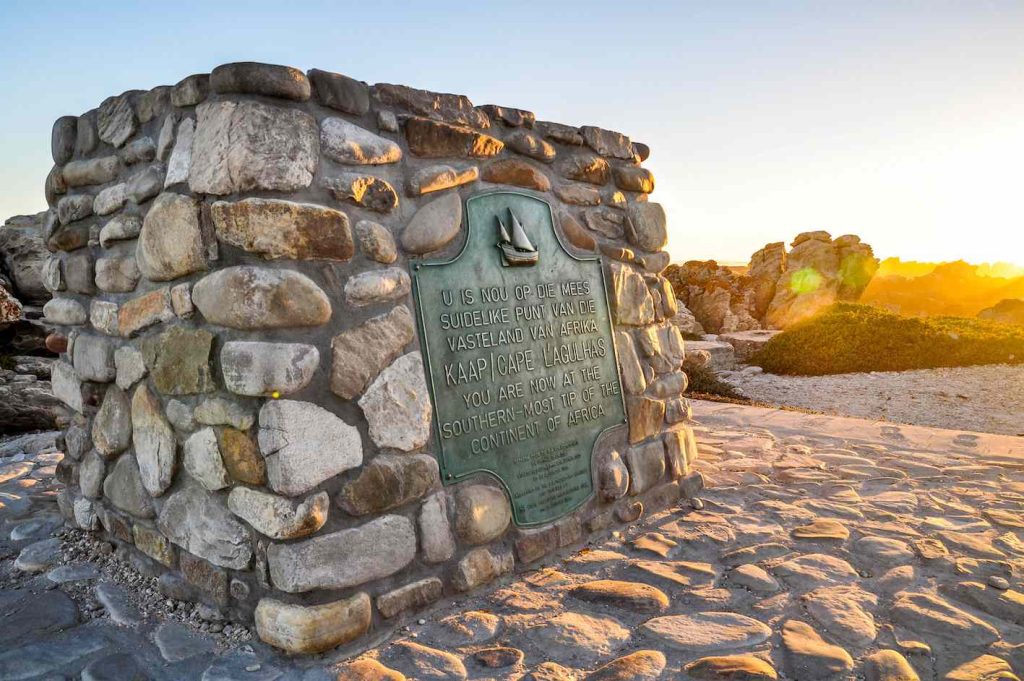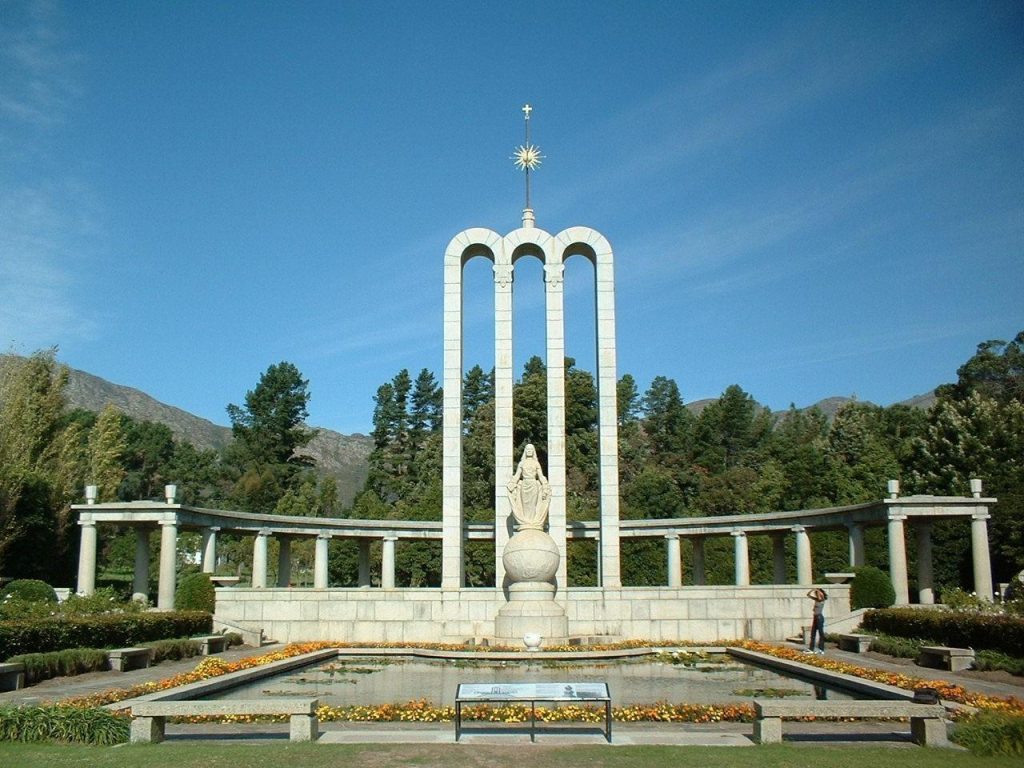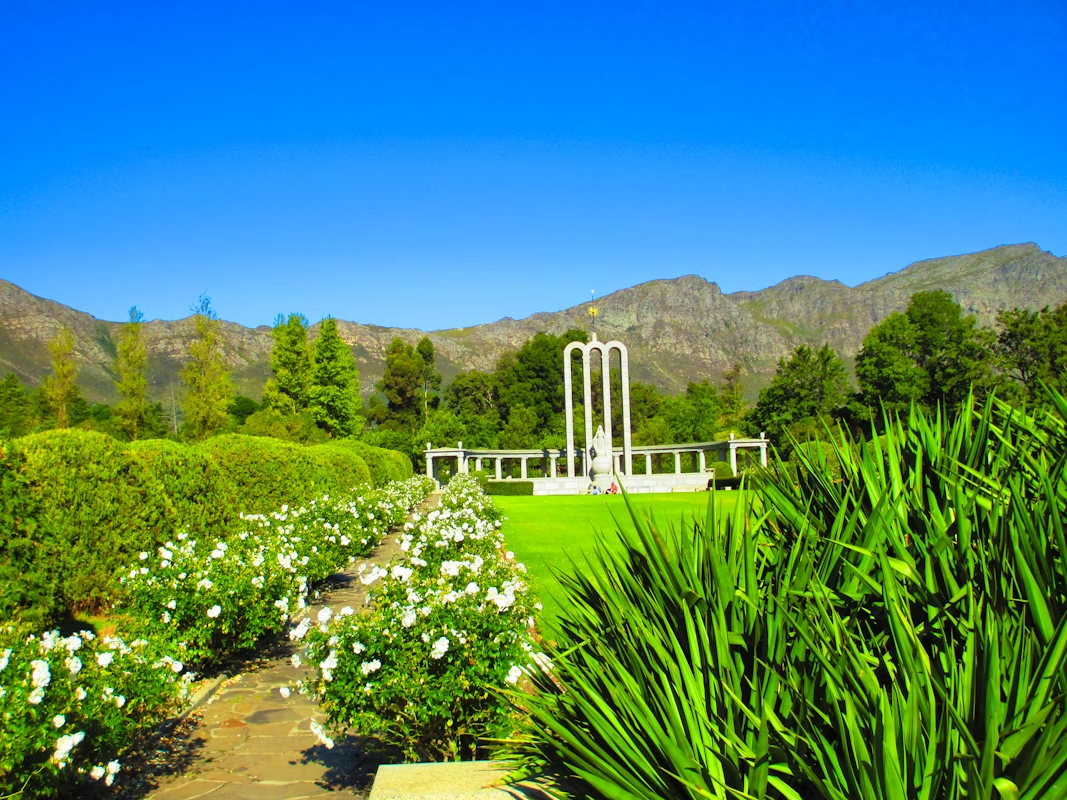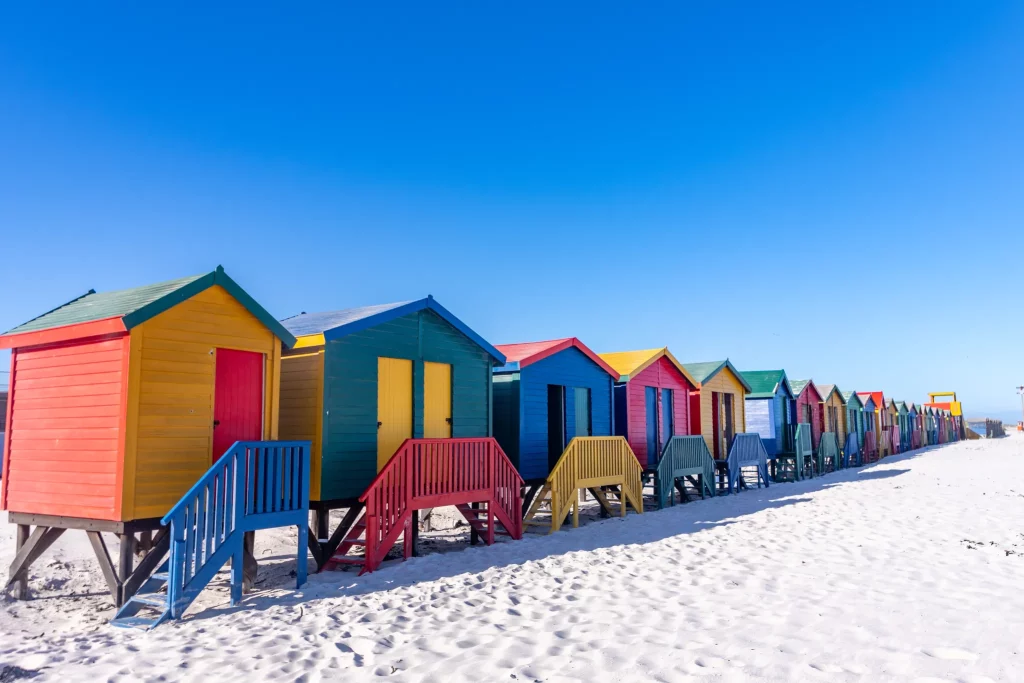Exploring South Africa’s Rich Heritage: Cape Agulhas, where the Indian and Atlantic Oceans meet; the Huguenot Monument, a significant historical site; and Muizenberg’s Beach Huts, famous coastal attractions.
The southernmost tip of Africa is a significant geographical location known as Cape Agulhas.
The Portuguese are thought to have discovered L’Agulhas in the early 1400s. On May 16, 1488, Bartholomew Dias finally gave St. Agulhas’ name to the southernmost point of Africa.
Here are key points about this southernmost point:
1. **Location:** – Cape Agulhas is situated at the southern tip of the African continent, near the town of L’Agulhas in the Western Cape province of South Africa.
2. **Geographic Significance:** – It is the geographic southern extremity of the African continent and marks the point where the Atlantic and Indian Oceans meet. This makes it distinct from the Cape of Good Hope, which is often mistakenly thought of as the southernmost point.
3. **Meeting of Oceans:** – The convergence of the Atlantic and Indian Oceans at Cape Agulhas is characterized by the mixing of waters from these two major oceanic bodies.

4. **Cape Agulhas Lighthouse:** – The area is home to the Cape Agulhas Lighthouse, which was built to increase maritime safety in the treacherous waters around the cape. – The lighthouse has served as a crucial navigational aid for ships passing through the Cape of Good Hope.
5. **Historical Significance:** – The name “Agulhas” is Portuguese for “needles,” and it is believed to have been named by early navigators who experienced compass needle fluctuations in the vicinity due to magnetic anomalies.

6. **Southernmost Point Marker:** – A marker at Cape Agulhas officially designates it as the southernmost point of the African continent. Tourists often visit the marker for photos and to symbolically stand at the southern tip.
7. **Distance from Cape Town:** – Cape Agulhas is approximately 170 kilometers (105 miles) southeast of Cape Town, making it a popular destination for those exploring the coastal regions of the Western Cape.
8. **Coastal Scenery:** – The coastline around Cape Agulhas is known for its rugged and scenic beauty. Visitors can enjoy panoramic views of the surrounding ocean and landscapes.

9. **Marine Life:** – The waters off Cape Agulhas are rich in marine life, and the area is frequented by fishermen and those interested in observing diverse oceanic ecosystems.
10. **Shipwrecks:** – The coastline near Cape Agulhas is notorious for shipwrecks, as the meeting of ocean currents and challenging sea conditions has led to numerous maritime incidents throughout history.

Cape Agulhas holds both geographic and historical significance, and its distinct location as the southernmost tip of Africa attracts visitors seeking to witness the meeting of two major oceans and explore the unique coastal environment.
The Huguenot Monument – A must Visit Historical Site in South Africa. See Why
The Huguenot Monument is a historical and cultural landmark located in Franschhoek, Western Cape, South Africa. Here are key details about the Huguenot Monument:
- Location:
- The Huguenot Monument is situated in the town of Franschhoek in the Western Cape province of South Africa.
- Historical Significance:
- The monument commemorates the arrival of the French Huguenots, a group of Protestant refugees, in the Cape of Good Hope during the late 17th century.
- French Huguenots:
- The Huguenots were French Protestants who faced religious persecution in France due to their opposition to the Roman Catholic Church.
- Seeking religious freedom, many Huguenots fled France, and some settled in the Cape of Good Hope under the rule of the Dutch East India Company.
- Monument Design:
- The Huguenot Monument was inaugurated on April 7, 1948.
- It was designed by South African architect J.C. Jongens, and the main sculpture was executed by Coert Steynberg.
- The monument features a central female figure, known as the “Huguenot,” standing with an outstretched arm. The female figure holds a Bible, symbolizing the religious beliefs of the Huguenots.

- Symbolism:
- The central figure is surrounded by statues representing various aspects of the Huguenot experience, including a mother with children, a broken chain symbolizing freedom from religious persecution, and a man offering a Bible.
- Foundation Stone:
- The foundation stone of the monument was laid by Dr. A.J. van der Merwe on August 17, 1937.
- **Museum and Memorial:
- The monument is not only a symbolic structure but also houses a small museum that provides information about the Huguenots and their contribution to South Africa.
- The memorial serves as a tribute to the cultural and religious heritage of the Huguenot settlers.
- Franschhoek Valley:
- Franschhoek, where the monument is located, is known as the “French Corner” and is renowned for its picturesque vineyards, French-inspired architecture, and culinary excellence.

- Cultural Heritage:
- The Huguenot Monument and the surrounding area are significant as a cultural and historical heritage site, attracting visitors interested in exploring the region’s colonial past.
- Huguenot Memorial Museum:
- Adjacent to the monument is the Huguenot Memorial Museum, which provides additional insights into the history and culture of the Huguenots in South Africa.
The Huguenot Monument stands as a symbol of religious freedom, cultural diversity, and the enduring legacy of the French Huguenots in the Cape of Good Hope. It is a site of historical importance and a cultural attraction in the beautiful Franschhoek Valley.
Explore the Muizenberg’s Beach Huts – A Famous Beach in South Africa
Muizenberg’s Beach Huts: The Muizenberg beach was established as a Dutch military post in 1743, the place witnessed the battle that led to the British takeover of Cape Town as a colony.
- Location:
- Muizenberg is a coastal suburb in Cape Town, South Africa.
- The iconic beach huts are situated along Muizenberg Beach, known for its long sandy shores and vibrant atmosphere.
- Distinctive Features:
- Muizenberg’s beach huts are renowned for their colorful and distinctive appearance.
- Each beach hut is painted in a unique and bright color, creating a visually striking and cheerful display along the shoreline.

- Historical Significance:
- The beach huts have historical significance and have been part of Muizenberg’s landscape for many decades.
- They are reminiscent of a bygone era, harking back to the early to mid-20th century when such structures were popular along seaside destinations.
- Cultural Icon:
- The beach huts have become an iconic symbol of Muizenberg and are often featured in photographs and postcards representing the vibrant character of the area.
- They contribute to the overall charm and nostalgia associated with Muizenberg’s beachfront.
- Photography and Art:
- The colorful beach huts provide a popular subject for photographers and artists, capturing the essence of seaside leisure and coastal beauty.
- The vibrant hues against the backdrop of the ocean and sky create picturesque scenes.
- Family-Friendly Atmosphere:
- Muizenberg Beach, with its row of beach huts, is a family-friendly destination. The colorful huts add to the lively and welcoming atmosphere of the beach.
- Families often visit to enjoy a day by the sea, taking shelter, and creating lasting memories in the shadow of these iconic structures.

- Surfing Culture:
- Muizenberg is known for its surfing culture, and the beach huts contribute to the laid-back and surf-centric vibe of the area.
- The beach is popular among surfers of all levels, and the huts provide a backdrop to the surf culture that has thrived in Muizenberg.
- Community Engagement:
- The maintenance and upkeep of the beach huts often involve community engagement and local initiatives to preserve their historic and cultural value.
- Residents and visitors alike appreciate the unique character that the beach huts bring to Muizenberg.
- Tourist Attraction:
- Muizenberg’s beach huts attract tourists from around the world who come to experience the beauty of the beach and capture the vivid colors of the huts in their travel memories.

Muizenberg’s beach huts are not just functional structures but vibrant symbols that contribute to the cultural identity and appeal of this Cape Town suburb. Whether admired for their historical charm, photographed for their aesthetic appeal, or enjoyed as part of a day at the beach, these beach huts hold a special place in the hearts of those who visit Muizenberg.
Read More Discover South Africa: The Big Hole, Table Mountain, and the Nelson Mandela Capture Site
Add a Comment
You must be logged in to post a comment.
